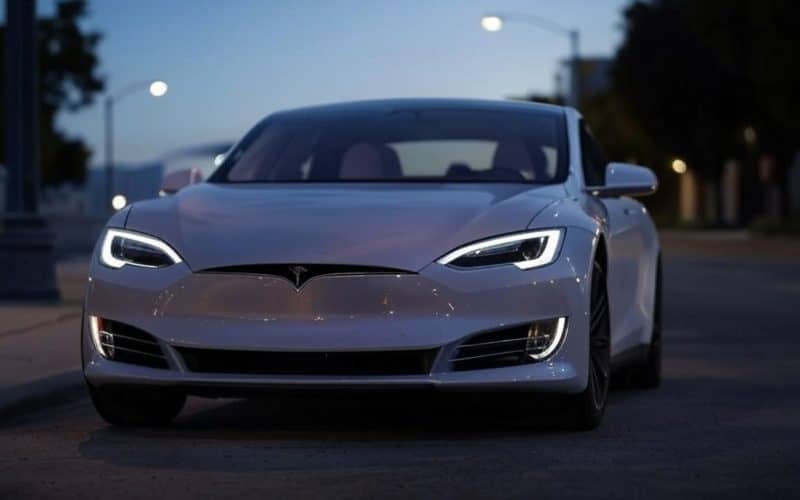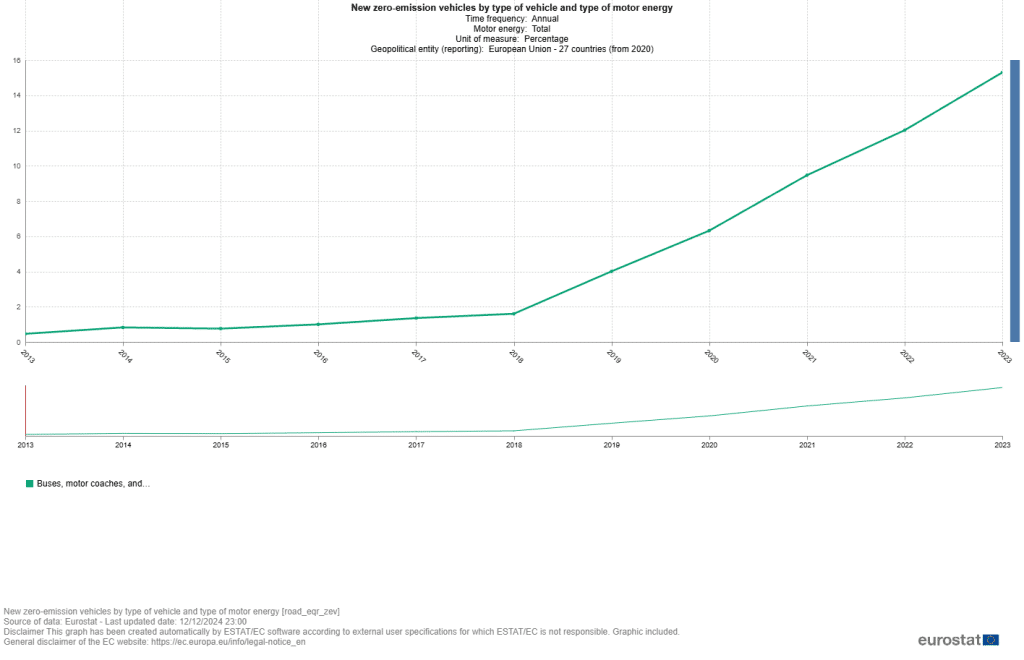
There is brand new data available from Eurostat which displays new zero-emission vehicles by type of vehicle and type of motor energy.
In 2023, 1,548,417 zero-emission passenger cars were registered across the EU, accounting for 14.5% of all new passenger car registrations. Sweden (38.6%), Denmark (36.1%), and Finland (33.8%) recorded the highest shares, while Croatia (2.6%), Slovakia (2.9%), and Czechia (3.1%) had the lowest.

EU countries reported the registration of 100,817 new zero-emission light lorries, with a maximum mass of up to 3.5 tonnes, alongside 5,262 zero-emission motor coaches and buses, 4,037 heavy lorries exceeding 3.5 tonnes, and 899 road tractors in 2023.
The number of zero-emission passenger cars registered in the EU exceeded 1.5 million, marking an increase approximately 70 times higher than in 2013 and 11 times higher than in 2018. Among public transport vehicles, 15.3% of newly registered motor coaches and buses were zero-emission in 2023, a substantial rise from just 0.5% in 2013. Zero-emission light lorries accounted for 7.3% of new registrations, while heavy lorries and road tractors represented 3.2% and 0.5%, respectively.
What are Zero-Emission Vehicles?
A zero-emission vehicle (ZEV) operates without producing tailpipe emissions of pollutants or greenhouse gases during any mode of operation.
This category includes battery electric vehicles (BEVs), which run entirely on electricity, and hydrogen fuel cell vehicles, which generate electricity through hydrogen reactions.
It’s important to note that while these vehicles emit no pollutants during operation, emissions may occur during the production of the electricity or hydrogen they use. Therefore, assessing the overall environmental impact of ZEVs requires considering the entire energy production and consumption cycle.
Other Zero-Emission Vehicles Besides Passenger Cars
- Light lorries (up to 3.5 tonnes): 100,817 registrations
- Motor coaches and buses: 5,262 registrations
- Heavy lorries (over 3.5 tonnes): 4,037 registrations
- Road tractors: 899 registrations
Growth and Market Trends
The number of zero-emission passenger cars registered in 2023 was 70 times higher than in 2013 and 11 times higher than in 2018. For public transport, 15.3% of new motor coaches and buses were zero-emission in 2023, a significant increase from just 0.5% in 2013.
- Zero-emission light lorries: 7.3% of new registrations
- Zero-emission heavy lorries: 3.2%
- Zero-emission road tractors: 0.5%
However, the slow adoption of electric vehicles is a reality right now. The expansion of zero-emission vehicles faces challenges such as high costs, limited infrastructure, technological barriers, and economic uncertainties. Additionally, on March 25, 2023, the EU and Germany agreed to revise the planned 2035 ban on combustion-engine vehicles. This agreement permits the continued sale and registration of internal combustion engine (ICE) vehicles after 2035, provided they operate exclusively on carbon-neutral fuels, known as e-fuels.
